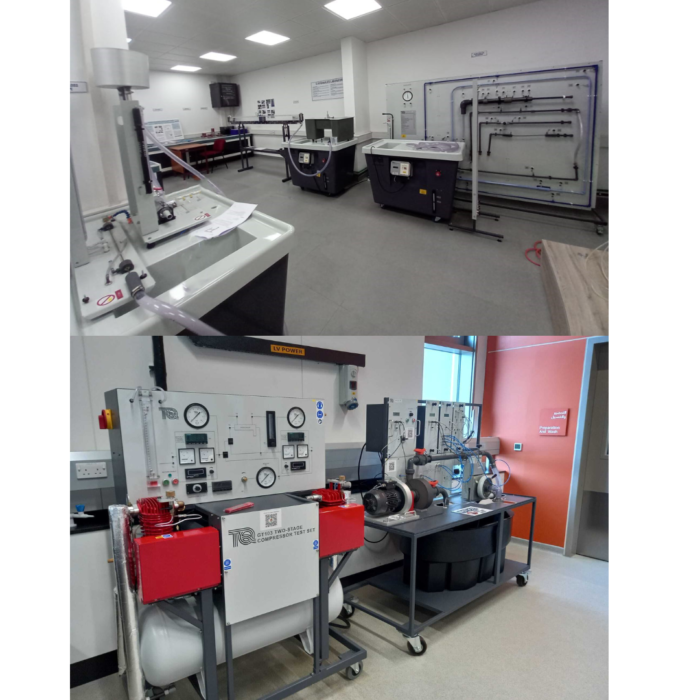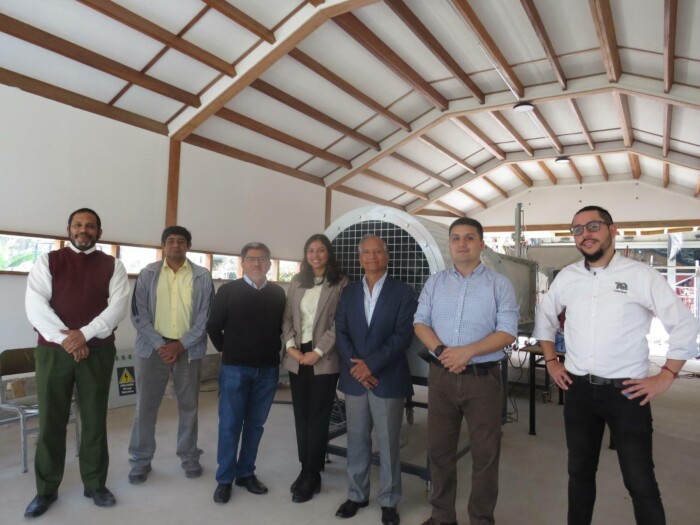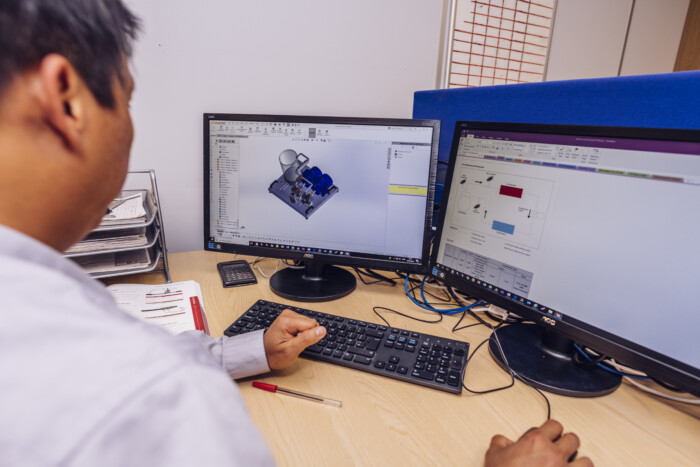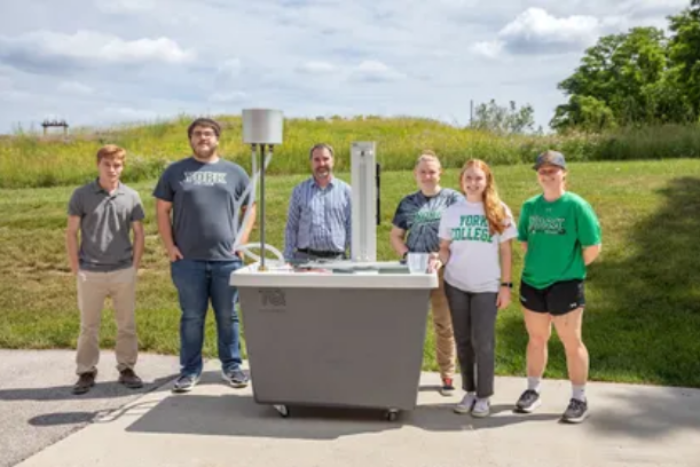G
Gases- Ideal: A theoretical gas composed of randomly moving particles with their only interaction being perfectly elastic collisions. Also known as a perfect gas.
Gay-Lussac’s Law: Also known as the Ideal Gas Law was designed by Joseph Louis Gay-Lussac to show the relationship between pressure and temperature pf a fixed mass of gas when kept at a constant volume.
Geneva Mechanism: A gear mechanism that translate a continuous rotation movement into intermittent rotary motion.
Governor: device that automatically maintains the rotary speed of an engine or other prime mover within reasonably close limits regardless of the load. A typical governor regulates an engine’s speed by varying the rate at which fuel is furnished to it.
- Hartnell: Hartnell governor is a spring controlled centrifugal governor, in which a spring controls the movement of the ball and hence the sleeve
- Porter: Centrifugal governor with a dead weight attached onto the sleeve, the porter governor overcomes the disadvantage of the watt governor since the watt governor is not suitable for high-speed engines.
- Proell: a type of governor which contains an additional extended arm used to support the rotating balls mounted on it. The fly balls are mounted on this arm. Proell Governor functions much more accurately than other governors and maintains a constant function without any fluctuation.

Gyroscope: A device consisting of a wheel or disc which spins rapidly on an axis which itself free to alter in any direction.
H
Hardness:
- Brinell: A test to show the hardness of a metal or alloy measured by hydraulically pressing a hard ball under a standard load into a specimen.
- Rockwell: A test to show the hardness of a metal or alloy measured by a diamond pointed cone apparatus which is pressed into the metal to a standard depth to determine the relative resistance to penetration as indicated by a dial.
- Vickers: A test for metals in which a 136-degree diamond pyramid is pressed into the surface of the metal being tested by a load of 5 to 120 kg.
Hare’s Tube: An apparatus for comparing the densities of liquids in two separate vessels by the means of their rise in two vertical tubes immersed with liquid at their lower end. This is all connected by a third tube where the suction is applied.
Harmonic Motion: In mechanics and physics, simple harmonic motion (SMH) is a special type of periodic motion where the restoring force on the moving object is directly proportional to the magnitude of the object's displacement and acts towards the object's equilibrium position.
Hart’s Inversor: Invented by Hart in 1874/5, Hart’s inversors are two planar mechanisms that provide a perfect straight-line motion using only rotary joints.
Hele-shaw Flow: Discovered by Henry Selby Hele-Shaw in 1898 who defined the flow as the stroke flow between two parallel flat plates separated by an extremely small gap.
Hindered Settlement: settling at a reduced speed (relative to the settling velocity of a single particle) due to interactions with neighbouring particles (displaced water, collisions or group settling), usually expressed by an empirical correction as a function of the effective volumetric concentration.
Hooke’s Law: Hooke’s law which states that the strain in a solid is proportional to the stress applied within the elastic limit of a solid.
Humidification: the process of constituting the water-vapor content in a gas. The reverse of the operation is called dehumidification. Both are important for many industrial operations such as air conditioning, gas cooling, controlled drying of wet solids, comfort heating etc.
Hydrograph: is a graph showing the rate of flow (discharge) versus time past a specific point in a river, channel, or conduit carrying flow. The rate of flow is typically expressed in cubic meters or cubic feet per second (cms or cfs). It can also refer to a graph showing the volume of water reaching a particular outfall, or location in a sewerage network.
Hydraulic Jump: A hydraulic jump is a phenomenon in the science of hydraulics which is frequently observed in open channel flow such as rivers and spillways. When liquid at high velocity discharges into a zone of lower velocity, a rather abrupt rise occurs in the liquid surface. The rapidly flowing liquid is abruptly slowed and increases in height, converting some of the flow's initial kinetic energy into an increase in potential energy, with some energy irreversibly lost through turbulence to heat.
I
Izod Tests: The Izod test is the standard testing procedure for comparing the impact resistances of plastics but can also be used on other materials. The Izod test is most commonly used to evaluate the relative toughness or impact toughness of materials and as such is often used in quality control applications where it is a fast and economical test. It is used more as a comparative test rather than a definitive test. This is also in part because the values do not relate accurately to the impact strength of moulded parts or actual components under actual operational conditions.
J
K
Kinetic Friction: Kinetic friction is defined as a force that acts between moving surfaces. A body moving on the surface experiences a force in the opposite direction of its movement. The magnitude of the force will depend on the coefficient of kinetic friction between the two materials. Friction is easily defined as the force that holds back a sliding object. The kinetic friction is a part of everything, and it interferes motion of two or more objects. The force acts in the opposite direction to the way an object wants to slide.

K Value: K-value refers to thermal conductivity which is the time rate of steady state heat flow through a unit area of a homogeneous material induced by a unit temperature gradient in a direction perpendicular to that unit area.
L
Latent Cooling: The word latent means hidden. Latent cooling capacity is used to take water out of the air. It is latent, or hidden, because you cannot measure it through temperature change. Latent changes involve a change of state. The water in the air is changing state from a vapor to a liquid. Latent cooling refers to the energy carried by humid air. Water vapor heat and requires energy and remove it.
Limit State Design (LSD): also known as Load And Resistance Factor Design (LRFD), refers to a design method used in structural engineering. A limit state is a condition of a structure beyond which it no longer fulfils the relevant design criteria. The condition may refer to a degree of loading or other actions on the structure, while the criteria refer to structural integrity, fitness for use, durability, or other design requirements.
Loss Coefficient: Loss coefficient, abbreviated as K, a dimensionless number, measures the minor loss to the change in velocity due to friction thru pipes, fittings, and valves. Most piping consists of more than a just straight lines, these losses are termed a minor loss
Longitudinal Stability: In flight dynamics, longitudinal static stability is the stability of an aircraft in the longitudinal, or pitching, plane under steady flight conditions. This characteristic is important in determining whether a human pilot will be able to control the aircraft in the pitching plane without requiring excessive attention or excessive strength.
Longitudinal Stress: stress produced when a specimen is subjected to internal pressure. The direction of the stress is parallel to longitudinal axis of its centreline axis, which means the stress acts in the direction of the specimen length.
LMTD (Logarithmic mean temperature difference): The temperature difference between hot and cold feeds at each end of the double pipe exchanger.
––––––––––––––––––––––––––––––––––––––––––––
We hope you found this glossary of terms helpful in aiding your learning, to move onto the next section of our Mechanical and Civil engineering principles glossary M-R follow the link here!















